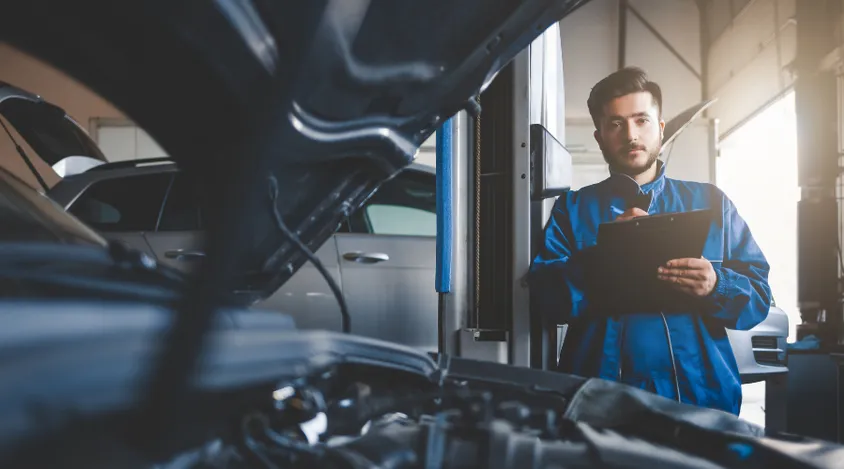How to Save on Car Maintenance Without Compromising Quality

Anúncios
Car ownership is a dream for many, but the costs of keeping your vehicle in top shape can quickly add up.
Learning how to save on car maintenance without cutting corners is essential for every driver who wants to protect their investment while keeping expenses in check.
From DIY hacks to smart shopping strategies, this guide will show you how to maintain your car’s performance and longevity without breaking the bank.
Anúncios
Understanding the importance of regular maintenance can help you avoid unexpected costs.
By being proactive, you can ensure your vehicle remains reliable and efficient for years to come.
Why Car Maintenance Costs Are Rising
Before diving into cost-saving tips, it’s important to understand why car maintenance can be so expensive.
Modern vehicles are equipped with advanced technology, from hybrid engines to sophisticated infotainment systems.
While these features enhance the driving experience, they also require specialized care, which can drive up costs.
According to AAA, the average annual cost of owning and operating a new car in 2023 is $9,282, with maintenance accounting for a significant portion of that figure.
In addition to technological advancements, labor costs have also increased, as skilled technicians are in high demand.
This combination of factors means that car owners must be more strategic about how they manage maintenance expenses.
Practical Ways to Save on Car Maintenance
1. Regular Maintenance: Prevention Is Cheaper Than Cure
One of the most effective ways to save on car maintenance is by sticking to a regular maintenance schedule.
Simple tasks like oil changes, tire rotations, and brake inspections can prevent costly repairs down the line.
For example, neglecting an oil change can lead to engine damage, which could cost thousands to fix.
Additionally, staying on top of maintenance can improve your vehicle’s fuel efficiency, saving you money at the pump.
Regular maintenance also helps to maintain your car’s resale value, making it a worthwhile investment in the long run.
2. DIY When Possible
Not all maintenance tasks require a trip to the mechanic.
Changing air filters, replacing windshield wipers, and even checking fluid levels are tasks most drivers can handle with basic tools and a little guidance.
YouTube tutorials and car manuals are excellent resources for learning these skills.
By taking on these simple tasks yourself, you can save on labor costs and gain a better understanding of your vehicle.
Moreover, developing DIY skills can empower you to tackle more complex repairs in the future, further reducing maintenance costs.
3. Shop Around for Parts and Services
Not all auto shops charge the same rates.
Compare prices for routine services like oil changes and tire rotations.
Additionally, consider purchasing parts from reputable online retailers or local stores instead of relying on dealerships, which often mark up prices.
Many online retailers offer competitive pricing and can deliver parts directly to your door.
By doing a little research, you can find quality parts at a fraction of the cost, allowing you to maintain your car without overspending.
4. Use High-Quality, Affordable Alternatives
While it’s tempting to opt for the cheapest parts available, low-quality components can lead to more frequent replacements and repairs.
Instead, look for mid-range options that offer a balance of affordability and durability.
For instance, synthetic oil may cost more upfront but can extend the time between oil changes, saving you money in the long run.
Investing in quality parts can also enhance your vehicle’s performance and reliability.
When you choose reliable components, you’re less likely to face unexpected breakdowns, which can be costly and inconvenient.

Advanced Strategies to Reduce Maintenance Costs
1. Leverage Technology
Modern cars come equipped with diagnostic systems that alert you to potential issues before they become major problems.
Pay attention to warning lights and use an OBD-II scanner to identify issues early.
Addressing minor problems promptly can prevent them from escalating into expensive repairs.
Many vehicles also have apps that can help you track maintenance schedules and remind you of upcoming services.
Utilizing these technological tools can simplify your maintenance routine and ensure you stay on top of your vehicle’s needs.
+ 10 Tips to Keep Your Car Looking New for Longer
2. Join a Car Enthusiast Community
Online forums and local car clubs are treasure troves of information.
Members often share tips on where to find affordable parts, which mechanics offer the best rates, and how to perform specific maintenance tasks.
These communities can also help you troubleshoot issues without paying for professional diagnostics.
Networking with fellow car enthusiasts can provide valuable insights and support, making car maintenance a more enjoyable experience.
Additionally, participating in these communities can lead to friendships and shared experiences, enhancing your overall car ownership journey.
3. Consider Extended Warranties and Maintenance Plans
If you own a newer vehicle, an extended warranty or prepaid maintenance plan might be worth considering.
These plans can cover major repairs and routine services, providing peace of mind and predictable costs.
However, read the fine print to ensure the plan offers value for your specific needs.
Sometimes, these plans can save you money on unexpected repairs, especially for high-cost components.
Weighing the pros and cons of such plans can help you make an informed decision that suits your budget and driving habits.
Common Mistakes That Increase Maintenance Costs
1. Ignoring Warning Signs
Ignoring unusual noises, warning lights, or changes in performance can lead to more severe issues.
For example, a squealing brake pad might only cost $50 to replace, but if ignored, it could damage the rotor, increasing the repair cost to $300 or more.
Being attentive to your vehicle’s behavior can help you catch problems early, saving you money and hassle.
Additionally, regular check-ins with your car can help you develop a better understanding of its condition, allowing you to address minor issues before they escalate.
2. Using the Wrong Fuel or Oil
Using the wrong type of fuel or oil can harm your engine and void your warranty.
Always refer to your owner’s manual for the manufacturer’s recommendations.
While premium fuel might seem like an unnecessary expense, it’s essential for high-performance engines.
Using the correct fuel and oil not only ensures optimal performance but also promotes longevity.
In the long run, adhering to these guidelines can save you from costly repairs and maintain your vehicle’s efficiency.
3. Skipping Regular Inspections
Even if your car seems to be running fine, regular inspections can uncover hidden issues.
For instance, a small crack in a hose might go unnoticed until it causes a coolant leak, leading to engine overheating and costly repairs.
Scheduling routine inspections can help you stay ahead of potential problems, ensuring your car remains in good condition.
Moreover, regular check-ups can enhance your car’s overall performance, providing a smoother and safer driving experience.

Tables: Cost Comparison and Maintenance Tips
| Maintenance Task | Average Cost at Dealership | Average Cost at Independent Shop | DIY Cost |
|---|---|---|---|
| Oil Change | $75 | $50 | $30 |
| Tire Rotation | $50 | $30 | $0 |
| Brake Pad Replacement | $300 | $200 | $100 |
| Air Filter Replacement | $40 | $25 | $15 |
++ Preventive Maintenance: What to Do Every 10,000 km?
| Maintenance Tip | Potential Savings |
|---|---|
| Perform regular oil changes | Prevents engine damage |
| Rotate tires every 6,000 miles | Extends tire life |
| Replace air filters annually | Improves fuel efficiency |
| Use synthetic oil | Reduces frequency of changes |
The Environmental and Financial Benefits of Proper Maintenance
Maintaining your car isn’t just about saving money—it’s also about reducing your environmental footprint.
A well-maintained vehicle runs more efficiently, consuming less fuel and producing fewer emissions.
For example, properly inflated tires can improve gas mileage by up to 3%, according to the U.S. Department of Energy.
This not only saves you money at the pump but also contributes to a cleaner environment.
Furthermore, regular maintenance can extend the lifespan of your vehicle, which means fewer cars on the road and less waste.
By being mindful of your car’s upkeep, you’re playing a part in promoting sustainability in the automotive industry.
For more comprehensive car maintenance advice, check out Car Maintenance Guide.
When to Splurge and When to Save
While it’s important to save on car maintenance, some areas are worth the extra investment.
For instance, always opt for high-quality brake components and tires, as these directly impact safety.
On the other hand, you can save on cosmetic repairs like minor scratches or dents, which don’t affect your car’s performance.
Investing in safety-related components can prevent accidents and ensure your vehicle operates at its best.
Knowing where to allocate your budget can lead to significant long-term savings and a safer driving experience.
Conclusion: Smart Maintenance Equals Long-Term Savings
Learning how to save on car maintenance without compromising quality is a skill every driver should master.
By staying proactive, leveraging technology, and making informed decisions, you can keep your vehicle in excellent condition while keeping costs under control.
Remember, the key to long-term savings is a balanced approach—knowing when to DIY, when to shop around, and when to invest in quality.
Whether you’re a seasoned car enthusiast or a first-time owner, these tips will help you navigate the complexities of car maintenance with confidence.
After all, a well-maintained car isn’t just a joy to drive—it’s also a smart financial decision.
